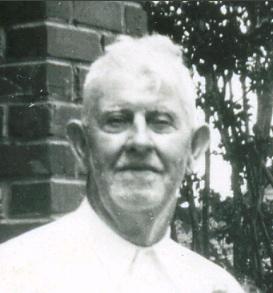documents1900 Census Itawamba County, Mississippi. Grover, Addie, and Edmund.
1910 Census Itawamba County. "Sherman" still at home.
1920 Census Itawamba County. Just George, Allen, Addie and Ruby.
mini biography from a memoir by Duane E. McIntosh:
 George married Buliah Bell Grissom, daughter of W. O. and M. J. Grissom 05AUG 1892.W. O. Grissom served the Southern Confederacy in Company H, 2nd Mississippi Davalry, Franch C. Armstrong's Brigade.
George married Buliah Bell Grissom, daughter of W. O. and M. J. Grissom 05AUG 1892.W. O. Grissom served the Southern Confederacy in Company H, 2nd Mississippi Davalry, Franch C. Armstrong's Brigade.
Buliah died 12OCT 1917, of complications of influenza and pneumonia. She is buried withher husband, several of her children and many of the Grissom family, in Oak Grove Cemeterynear Ratliff, Mississippi. George then married Alma Richardson, a school teacher, 31AUG 1921.
George had several hundred acres of good farm land which he farmed profitably, with theexception of the year the boll weevil arrived in the area. Like many others, he raised, cured and smoked his own meat, grew and dried fruit, presevered vegetables, made soap, etc.George went beyond others, in that he used the barter system extensively. When he wentto town shopping, he took along sufficient vegetables, eggs, or what ever was required, toobtain sufficient money for his purchases and show a little profit.
George was more self sufficient than any man I have ever known, although I must make clearthat while I "knew" him, most of what I "know" of him comes from stories told of him by myfather and others.
He had a one man saw mill, from which, in his "off time" he sawed lumber sufficient for hisanticipated needs, whether building a house, or a barn, mending fences, etc. The lumber, sawed green, was properly stacked for drying and later use. He had a large and very completeblacksmith shop, where he was a skilled smith. He used to make repairs to farm equipment and tomake hardware items including his own nails. Little, if anything, was wasted; when a screenneeding replacing on a door, the good portions seved a fly swatters.
George had one of the first tractors in the county, a Fordson. He was never very impressedwith it because it became stuck so easily, and you still needed a team to pull it out.I don't know when it fell into disuse, but my last memories of it have it rusting out bythe barn.
He had one of the early "T" Model cars. My father, E. S. McIntosh, was a youngster at thetime he got it, and desperate to drive it. He did his best to convince his father that because he was left handed, he was therefore left footed and could never master it. WhileGeorge was left handed, he was a large man, I expect at least 6' 6", blue eyed, very muscular not fat, wore a size 10 hat and a 14 shoe. For those of you who have ever triedto tromp the pedals of a "T" Model (there are three, closely spaced) it is easy to guessthat my father had some success in his calim, due to size, not side preference. Georgehad the car delivered at his home, received some brief instructions and then pushed it tothe center of a nearby pasture in which to practice. In short order it got away from himand ended up stalled over a spike tooth harrow, without a scratch on it. My dad got to be the driver for awhile until grandfather mastered the machine.
George had a least one other car that I know of, a 1931 "A" Model Ford. He kept this carand used it regularly until he was a hazard on the road, even then he would sneak it outnow and then for a ride to "the bottom" to see the crops.
George was raised by both parents until he was 15 years old and his father died, thereafterhis mother became the dominate factor in his life. He had a large picture of he over hisbed until he died.
He was a man of few words. He had a good vocabulary and used it well, be he doled conversation out sparingly. When he did say something, people listened. My grandfatheralso never was much on profanity, this really big bad word(s) was "I DOGGIES".
He never betrayed emotion, he tried to raise his children the same way, with only partialsuccess. He wasn't one for hugging and cheek kissing or any of those little things thatmake one vulnerable. I presume this was the way his father treated him. I don't mean toimply that grandfather didn't have the capacity for love or use it, in fact I'm sure he did, he just didn't think it was proper to do it publicly.
Note from Michael McIntosh:
"Aye, Doilgheas" could be a better spelling of "I DOGGIES". If so, it would be Gaelic for somethinglike, "Yea, sorrow/affliction", or "Bummer!".
Photo of George William, wife Buliah, and children Dr. Allen McIntosh and Addie McIntosh
Photo of Susanna Ritter, from the portraitmentioned above